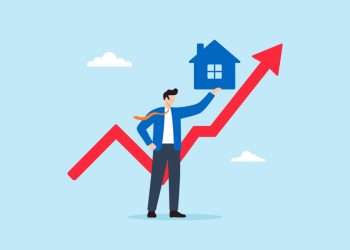 At some point, chances are your agents will encounter buyers who want a home with eco-friendly features. These “green buyers” are likely to seek a variety of benefits from green homes, primarily within three areas: energy efficiency, health, and sustainability. Recognizing the perceptions, values, and preferences of buyers in each category will help your agents understand the knowledge and resources required to best serve this demographic.
At some point, chances are your agents will encounter buyers who want a home with eco-friendly features. These “green buyers” are likely to seek a variety of benefits from green homes, primarily within three areas: energy efficiency, health, and sustainability. Recognizing the perceptions, values, and preferences of buyers in each category will help your agents understand the knowledge and resources required to best serve this demographic.
Buyers primarily concerned with energy efficiency in a home might ask, “What are the utility bills like?,” or “What’s this home’s carbon footprint?” These buyers likely know that, in a typical U.S. home, approximately 40 percent of energy costs go to home heating and cooling, 50 percent to running appliances, electronics, and lighting, and the balance to water heating. They also understand that these costs can be greatly reduced by purchasing a home with energy-efficient features. These buyers are practical, and may spend more on the purchase price of a home with energy-efficient features to save on operational costs later. Homes that appeal to this category of buyers will be high-performance homes with efficient HVAC systems and appliances, water-saving methods, high R-value insulation, and high-quality windows and doors.
To assist these buyers, your agents should arm themselves with basic knowledge of green home construction techniques and standards to help buyers evaluate the homes they view. Helpful websites to visit include EnergyStar.gov for home improvement and energy ratings information, NAHBgreen.org for the National Association of Home Builders’ green building standards, DSIREUSA.org for information on tax credits, incentives, and rebates, and GreenREsourceCouncil.org for information on the National Association of REALTORS®’ Green Designation.
Buyers interested in green homes for health reasons might say, “My children have allergies,” or “Is this a walkable area?” These buyers place a premium on good indoor air that is free of volatile organic compounds (VOCs), allergens, and pollutants. Healthy living is a priority, so they want a home interior and home features that are resistant to mildew and mold. They also want easy outside access to enjoy the outdoors. Homes that appeal to this category of buyers may feature hardwood floors, non-porous countertops, high-quality HVAC systems, low-VOC paints and finishes, a large yard, and a community with good walkability ratings.
Serving these buyers requires that agents have a basic understanding of air quality considerations, VOCs, and environmental hazards like lead or asbestos. Helpful websites to visit include EPA.gov for information from the Environmental Protection Agency on topics, such as air quality in most cities. Another helpful website is WalkScore.com, which gives a walk, transit, and bike score for neighborhoods all across the country.
Buyers who value sustainability in a home might say, “We’ll need room for organic gardening” or “Which direction does this home face?” These buyers prioritize resource conservation and recycling. They may strive to live in harmony with nature in their daily lives, and they are committed to reducing their carbon footprint and using renewable energy sources. Homes that appeal to this group of buyers may feature recycled and reclaimed building materials, a design that maximizes daylighting and solar heating, energy and water-saving appliances, a large space for a garden, and bike lanes in the neighborhood.
Agents serving this group of buyers should brush up on green choices for outdoor water management, such as permeable pavement, rain barrels, and rain gardens. They should also learn about the green features in the community, such as public transit systems, community gardens, local farmers’ markets, and park areas. Helpful websites to visit include Energy.gov for tips from the U.S. Energy Administration on conserving water and energy inside and outside the home, LocalHarvest.org for a directory of CSAs and local food markets across the country, and APTA.com for links to transit systems in each state from the American Public Transportation Association.
If you haven’t encountered green buyers in your business yet, it is very likely that you will. Preparing your agents to understand the priorities and preferences of this demographic will ensure that buyers receive the knowledge and meaningful guidance that they expect. When your agents have the tools to serve green buyers, everyone wins.
Marc Gould is vice president, Business Specialties, for the National Association of REALTORS® and executive director of REBAC. A wholly-owned subsidiary of the National Association of REALTORS® (NAR), The Real Estate Buyer’s Agent Council (REBAC) is the world’s largest association of real estate professionals focusing specifically on representing the real estate buyer. With more than 30,000 active members, REBAC awards the Accredited Buyer’s Representative (ABR®) designation to REALTORS® who work directly with buyer-clients.
For more information, visit www.REBAC.net.










